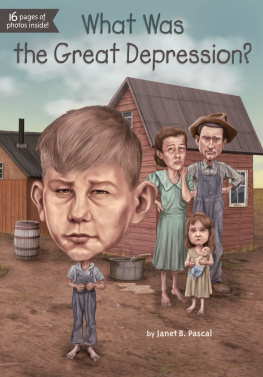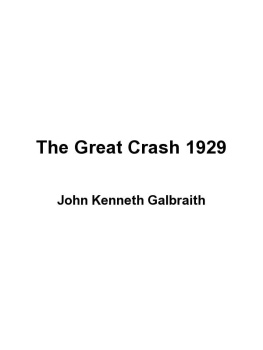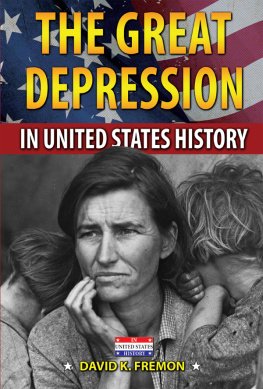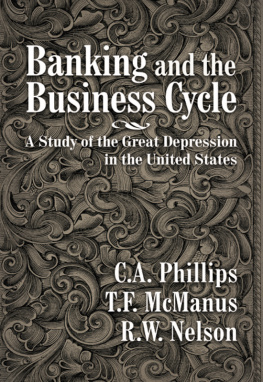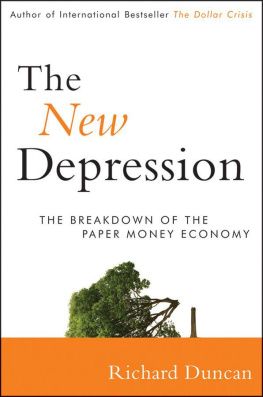Copyright 2017 by Charles R. Morris.
Published in the United States by PublicAffairs, an imprint of Perseus Books, a division of PBG Publishing, LLC, a subsidiary of Hachette Book Group, Inc.
All rights reserved.
No part of this book may be reproduced in any manner whatsoever without written permission except in the case of brief quotations embodied in critical articles and reviews. For information, address. PublicAffairs, 1290 Avenue of the Americas, New York, NY 10104
PublicAffairs books are available at special discounts for bulk purchases in the U.S. by corporations, institutions, and other organizations. For more information, please contact the Special Markets Department at the Perseus Books Group, 2300 Chestnut Street, Suite 200, Philadelphia, PA 19103, call (800) 810-4145, ext. 5000, or e-mail special.markets@perseusbooks.com.
Book Design by Jack Lenzo
Library of Congress Control Number: 2016962748
ISBN 978-1-61039-534-2 (HC)
ISBN 978-1-61039-535-9 (EB)
First Edition
E3-20170206-JV-PC
Comeback: Americas New Economic Boom
The Dawn of Innovation: The First American Industrial Revolution
The Sages: Warren Buffett, George Soros, Paul Volcker, and the Maelstrom of Markets
The Trillion Dollar Meltdown: Easy Money, High Rollers, and the Great Credit Crash
The Surgeons: Life and Death in a Top Heart Center
The Tycoons: How Andrew Carnegie, John D. Rockefeller, Jay Gould, and J. P. Morgan Invented the American Supereconomy
Money, Greed, and Risk: Why Financial Crises and Crashes Happen
American Catholic: The Saints and Sinners Who Built Americas Most Powerful Church
The AARP: Americas Most Powerful Lobby and the Clash of Generations
Computer Wars: The Fall of IBM and the Future of Global Technology
The Coming Global Boom: How to Benefit Now from Tomorrows Dynamic World Economy
Iron Destinies, Lost Opportunities: The Arms Race Between the United States and the Soviet Union, 19451987
A Time of Passion: America, 19601980
The Cost of Good Intentions: New York City and the Liberal Experiment, 19601975
With love, to Beverly
I was lucky enough to see with my own eyes the recent stock-market crash, where they lost several million dollars, a rabble of dead money that went sliding off into the sea.
F EDERICO G ARCIA L ORCA
European Defense Spending
Real ($1929) and Nominal US GNP, 19001929
Buick Sales, 19051910
Relative Sales Performance of Ford and GM, 19191929
Manufacturing Productivity in the United States, 18991937
US Crop and Meat Prices plus Output per Farm Worker, 19101930
US Monthly Industrial Production: 19201929
Dow Jones Industrial Average Monthly Close
US Real and Nominal GDP, 19291937
Percent Unemployed in United States: Civilian Labor Force, Civilian Private Nonfarm Labor Force, 19261941
Annual US Corporate Capital Flotations, 19261936
Ivar Kreuger : Closing Financial Position, at Book Value, 1932
Monetary Gold Holdings, Selected Countries
Newspaper Posting of Apartment Rental Rates, German Hyperinflation, 1923
Great Britains Current Account Woes
German Fiscal Follies, 19241929
US All-Farm Price Index
Ratio Hourly Manufacturing Pay per Unit of Output in the United States, 19191941
in Federal Liabilities (Percent GDP), 19301939
Apples-to-Apples Comparison, Roosevelt and Hoover Social Spending (Per Year, Per Capita, 1930 dollars)
US Industrial Production, March 1933January 1940
US Unemployment and Wages, 19291940
Combined US Manufacturing Payrolls and Gross Revenues, 19291934
Changes in Hours, Real and Nominal Wages, and Employment in Manufacturing, 19291933
US Durable Manufacturers Production, Prices, and Gross Revenues, 19291934
Comparison of US Durable/Nondurable Depression Production and Pricing Strategies
US Productivity Growth, 19291941
Collapse of Farm Prices
AZ Power with Standard Rates
A Five-Tier Holding Company Pyramid atop a Standard Utility Operating Capital Structure
Same Pyramid with 5 Percent on Equity
How Accountants Manufacture Earnings
T he Great Depression is an evergreen topic, and its gotten a particular boost from the events of the Great Recession. If nothing else, the disdain that practitioners of modern economic management often exhibit for the officialdom of the 1930s may now be leavened with some empathy. Noting all exceptions, and there werent many, the best people in the world of finance and economics were blindsided by the Recession, and the recovery has been long and frustrating. The lessons of the Depression did serve modern policy makers well, however, in designing remediations. Flooding the world with new liquidity would have been anathema to the managers of the 1930s.
I understand the Great Depression as a world phenomenon, with roots in World War I and its sequelae. The United States enjoyed the most successful economy, but signs of overheating were rife. By the time of the stock market crash, it was due for a major, possibly a nasty, correction. But it was the global Crash that turned an American correction into a Great Depression.
My perspective throughout the book is an American one, filtering the international events through American eyes, while keeping the important European events always in sight.
Part One is devoted to a description of American daily living in the 1920s. Radical changes were afoot in every aspect of life, many of them driven by new technology, especially the automobile and AC electricity. It was both a heady and a frightening time, with population migrations from south to north and from rural areas to cities. There were deep changes in the workplace and in relations between men and women. Electricity-enabled mass communications created flash-crowd mass events long before the internet.
Part Two lays out the industrial structure of America and details its underlying economic performance. The 1920s was a time when employers first grappled with the implications of mass production and their relations with employees, and there were the first fumbling attempts by big business to sort out its relations with government. The remarkable boom in financial markets unbalanced ethical compasses and set the sector up for a fall.
Part Three concentrates on the Crash in America. It happened in the first year of the presidency of the supremely gifted Herbert Hoover, a man who had never failed at anything. I examine the astonishing speed of the downturn, the impact on common people, the minimal attempts at remediation, and the consequences of the collapse. Two concluding sections chart the ruin of Samuel Insull and Ivar Kreuger.
Part Four takes a global perspective. It sketches a history of the gold standard, and the monetary pax Britannica that kept it on keel for so long. The central issue was how to reconstruct the international trading system, amid the poisonous atmosphere of mistrust and dishonesty that was the heritage of the war and the Treaty of Versailles. The major powersthe United States, Great Britain, France, and Germanyeach had quite different views on issues of war debts and reparations, on reconstructing the gold standard, and on the desirability of inflation or deflation.
Part Five returns to America and analyzes the initial recovery under Roosevelt, the 1937 downturn, and the subsequent recovery. I review a large swath of the current scholarship on the New Deal to appraise where it helped and where it got in the way. I also show that it wasnt World War II that ended the Depression, for it was already over before the war started.


